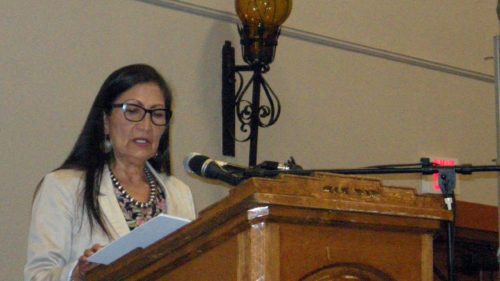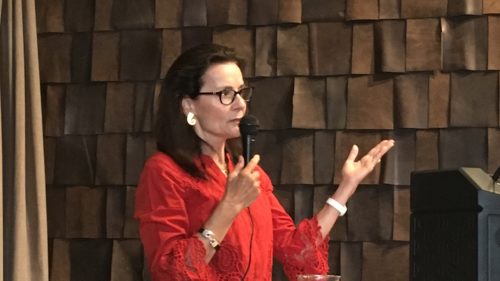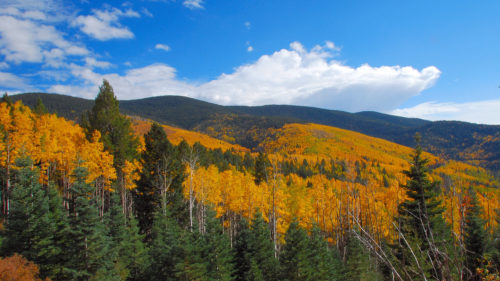By Thomas Gomez
NMWF Online Media Director
Big game hunting season is many months away in New Mexico. The off-season is a perfect time to tune up gear, get in shape, and plan for the coming season. It is also a good time to develop new skills. Here are tips to help the modern hunter be more successful in the field.
Get comfortable with a ballistic calculator: Ballistic calculators like Hornady 4DOF and Applied Ballistics allow you to enter specific variables and generate a drop table that is tailored to your rifle and ammunition. Ballistic calculators can be downloaded onto a smartphone and, depending on which one you choose, are free or relatively inexpensive. Until you account for density altitude, temperature, barometric pressure, humidity, ammunition velocity, wind direction, and wind speed — your bullet drop is just a guess.
Once you generate a ballistic table you can better understand drop, velocity, and energy. These are invaluable to understand your rifle’s capabilities and limitations. For general hunting, I recommend Hornady 4DOF. If you want to go down the ballistic “rabbit hole,” I recommend you purchase Applied Ballistics for your smartphone. Either tool will require a chronograph and data from a local weather station.
Shoot steel and confirm your data: Whether you dial, hold, or set your zero according to max point blank range (zero 2- to 3.5 inches high at 100 yards), you need to confirm your ballistic drop for the range at which you intend to harvest game.
In the above paragraph, I recommend the use of a ballistic calculator and develop a precise ballistic table. If you don’t want to do that, you can still build a ballistic table by shooting targets at range. The easiest way to gather ballistic data is to purchase a 10-inch AR500 ballistic target, hang it up and shoot it.
Shooting steel is a lot of fun and a great way to train. Once I have zeroed my rifle at 100 yards, I work backward in 100-yard increments and make sure that the data in my ballistic calculator matches the data I observe in real life. At each 100-yard interval, I take notes in my shooting journal: of wind direction, holds, and where my bullet hit the target. When possible, set up in the desert to make it easy to see hits and misses. Although I don’t consider myself a “long range hunter,” I typically confirm ballistic data all the way out to 800 yards.
A rangefinder is a good tool for this exercise, though a GPS unit or even a 100-yard measuring tape will work as well. A 10-inch plate represents the kill zone of most large animals in North America. If you want to go with smaller targets, awesome, but a 10-inch target should be your minimum standard, especially to practice out past 300 yards. For targets, I recommend JC Steel Targets or AA Targets.
Buy a training rifle that is inexpensive to shoot: One way to get better at shooting is to shoot! Hunting ammunition can be expensive, so I recommend investing in a rifle that’s similar to your main hunting rifle, but chambered in 5.56/.223 Remington or 7.62×39.
These rounds are available cheap and can be purchased in bulk. Unlike a rimfire rifle, these calibers have recoil that you will need to manage via solid fundamentals. Also unlike rimfire, you can shoot these calibers out to ranges at which you harvest animals. The experience will be invaluable, and you can set up scenarios and practice different shooting positions. Hang a 10-inch steel gong and start shooting!
Find a local match and compete: Shoot a match F-Class, Precision Rifle Series, National Rifle Series, and local club matches present numerous opportunities to prepare and test your skills under stress. Precision rifle fire, long-range shooting, awkward positions, and problem-solving under a time constraint require you to understand every facet of your gear and ballistic data, and ultimately perform. This experience will make you a better shooter and will prove invaluable when you set up on an animal to harvest.
Don’t worry about placing, the experience alone will make you a better hunter. Period.
Learn to use ancillary gear: When I pursue game in the woods or on the prairie, I carry a lightweight carbon fiber tripod and a set of trekking poles. Without a doubt, the most stable shooting position is prone, off of a bipod or a backpack. Due to musculoskeletal injuries or terrain, this position may not be available. A robust tripod, that the rifle can be balanced on or affixed to, offers a simple solution. Tripods facilitate shots taken from sitting, kneeling, or standing positions, or can support gear such as binoculars and spotting scopes. Trekking poles are invaluable when you need to carry a heavy load uphill, or when you need to stabilize yourself on broken terrain. In the absence of a tripod, trekking poles can also function as shooting sticks in a sitting, kneeling, or standing position.
Have a question about ballistics, gear, hunting, or precision rifle shooting? Email me at thomas@nmwildlife.org



